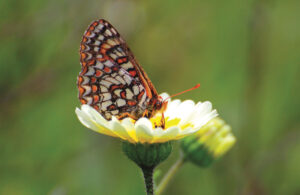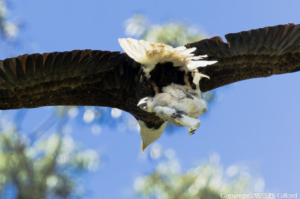When I was growing up in Tiburon, my grandparents lived only a couple miles away and were a big part of my childhood. It was my grandfather who ignited my interest in nature, and in particular birds, by giving me my first binoculars and a bird book. When I was asked at age five, “What is your favorite bird?,” I proudly and precociously proclaimed, “Turkey vultures!”
I continued to learn about birds during my years at college, taking ornithology classes and birding trips whenever I could. After college I became close friends with Alton Raible, an avid birder who always knew where and when to look for all kinds of birds in Marin. I never missed the hawk migration and the Christmas bird counts.
In 1988, my life changed irrevocably when I was blinded after using over-the-counter eye drops contaminated with lye. Over the next few years I had to learn to do everything without sight and rely on my remaining senses. At the Orientation Center for the Blind in Albany, I learned how to walk with a cane, read Braille, vacuum, iron, even balance my checkbook. But there were several things I loved that I thought I would have to give up forever: my work as a pediatric nurse, photography, jewelry-making, flying planes, and birding.
Only a few months after losing my sight I remember going with Alton to the Las Gallinas treatment ponds near McGinnis Park, north of San Rafael, a favorite birding spot of ours. He brought a picnic and read to me, mostly just to get me outdoors. Being out in nature, breathing the warm air, and enjoying his company again was soothing. But at the same time I pined for the thrills we had shared spotting and identifying birds together.
Gradually, I realized that I could do many things by letting go of how I had done them before and thinking up new and creative ways to accomplish a task. I learned how to cook, garden, and hike with my new guide dog. I even started taking pictures again, by listening to the people I was photographing and getting their feedback on what they saw in the photos. But birding still seemed out of reach.
Then, in 1996, I was hiking with my husband, Larry, in the Catalina Mountains of Arizona, when he saw a bird he couldn’t identify. I started asking him questions: how big is it, what’s the shape of its tail, what’s the color of its beak, and so on. By piecing together his responses, I was able to form a mental picture and tell him to look up cactus wren in the field guide. Sure enough, that’s what it was. The lightbulb went on, and I realized I had discovered a new way to enjoy bird watching.
Realizing that I could get back into birding, I bought several birdcall CDs and spent hours listening, connecting the songs with the images I’d retained from years of birding. Since I lost my sight, my attention has shifted to listening and interpreting what I hear to orient myself in space. This shift in attention has allowed me to focus on the subtle nuances of everything I hear. When I’m out with sighted friends, whether birders or not, it’s fun to solve the puzzle of what birds they’re seeing. Attuned to the birds’ songs, I am sometimes even able to identify a bird that is invisible in the canopy before they can find it with their binoculars.
These days, my main passion is competitive rowing, and I practice out on the Bay six days a week. My favorite moments are when my joy in rowing and love of birding merge. Hearing the sound of the wings and feet of a flock of scoters taking flight from the water as our crew team practices on San Francisco Bay, or the calls of a Forster’s tern fishing from a few feet above the water, brings the same joy to me as the first time I identified a turkey vulture. And I’ll never forget the “sighting” of an albatross after my rowing partner described its wing-span and flight pattern while we were rowing in a 33-mile race from Catalina Island to Marina del Rey. It is this sharing of unique moments with another species that takes me out of my own world, and allows me to imagine what birds are seeing in flight and communicating through their songs.
Now, when I am hiking and hear the familiar slow, non-rhythmic beat of a low-soaring turkey vulture, I instantly resurrect those childhood memories of watching the V shape of the vulture’s wings, its naked red head moving and rocking on the thermals.

.jpg)



